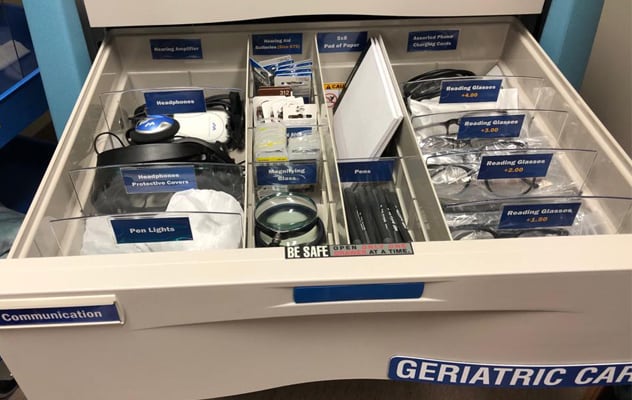Nov. 06, 2021
Mayo Clinic is cognizant of the aging American population and seeks continuous improvement in the care provided to geriatric patients. As part of this effort, Mayo Clinic's campus in Rochester, Minnesota, is pursuing Level 1 geriatric accreditation. This certification is through the Geriatric Emergency Department Accreditation Program (GEDA), part of the American College of Emergency Physicians (ACEP). The team working toward the certification — including Erin M. Larson, APRN, CNS, D.N.P., and Janet L. Finley, APRN, CNS, M.S., emergency medicine clinical nurse specialists, and Neha P. Raukar, M.D., M.S., and Robert J. Hyde, M.D., M.A., emergency medicine physicians — plan to submit the application by the end of 2021.
What the certification means
The geriatric certification is voluntary. It's considered "an indicator of preparedness to meet the needs of the older adult population, considered those aged 65 and older, and a mark of excellence for best practice," says Finley. ACEP Geriatric Emergency Department Accreditation may award certification at three levels: bronze (Level 3), silver (Level 2), and gold (Level 1). To attain Level 1 accreditation, the emergency department (ED) at Mayo Clinic in Rochester, Minnesota, needs to operationalize at least 20 policies and procedures that specifically address geriatric care, says Dr. Raukar.
Application process
As the team prepares the geriatric certification application, it's reviewing many aspects of the emergency department to ensure that they address the needs of the geriatric population, including education, the physical environment, and policies and procedures in the emergency department. After submission, external reviewers will visit Mayo Clinic in person for the initial phase of the certification process, followed by the submission of additional information.
Geriatric comfort menu
Dr. Larson and Finley explain that the Rochester campus of Mayo Clinic already has in place many elements required for certification. However, the application process has presented an opportunity to further refine and standardize care for geriatric patients, says Dr. Larson.
Education for ED and trauma staff
Part of the certification includes geriatric education for ED and trauma staff, as these groups work collaboratively. The certification team is conducting ongoing discussions regarding competencies, explains Finley. Examples include the basic physiology of the older adult and other age-related changes occurring in geriatric patients. The team is discussing whether to use an existing education module or create Mayo Clinic's own geriatric materials.
Geriatric-friendly practices
Dr. Larson and Finley report Mayo Clinic hasn't needed to purchase large equipment to serve the geriatric population — standard patient handling equipment is sufficient — yet the application process has promoted geriatric care updates and refinements.
Examples of customizing care for geriatric patients include geriatric carts, physical environment, medication adjustments, and delirium screening and care:
العربة المخصصة لأمراض الشيخوخة

العربة المخصصة لأمراض الشيخوخة
تحتوي العربة المخصصة لأمراض الشيخوخة في مايو كلينك على مجموعة متنوعة من الأغراض التي تساعد هذه الفئة من المرضى على الشعور بالراحة.
Geriatric cart
Staff bring in this special cart for geriatric patients, offering them selections including magnifiers and reading glasses to improve vision, blankets and gloves for keeping warm, and fidget toys for those who prefer to keep their hands busy.
Physical environment
Rooms used for geriatric care need to have nonslip floors and easy-to-read clocks for patients to orient themselves.
Medication adjustments
It's important for staff to recognize that older patients may metabolize medications differently than younger patients and make any needed adjustments. Furthermore, older patients are typically taking multiple medications (polypharmacy), which increases the risk of medication interactions, drug toxicity, falls, delirium and noncompliance due to complexity. Partnering with pharmacy colleagues helps identify patients at risk.
Delirium screening and care
Staff will screen for delirium, and if it's present, appropriate interventions will be incorporated into a patient's care.
Finley sees a distinct need for policies, practices and education specifically for caring for the geriatric population treated at Mayo Clinic's campus in Rochester, Minnesota. "Geriatric care is substantially different," she says. "In the emergency department, we see many populations. When you go into a room with a geriatric patient, it's helpful to know they are a unique classification and may need special resources to optimize outcomes."